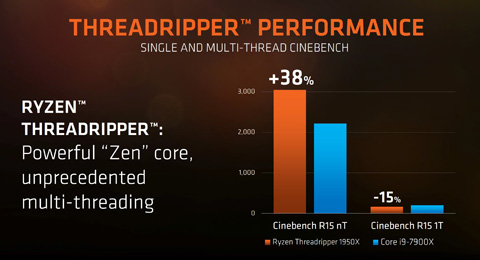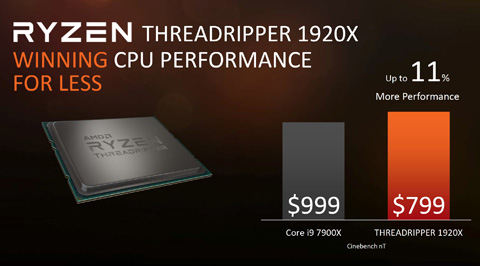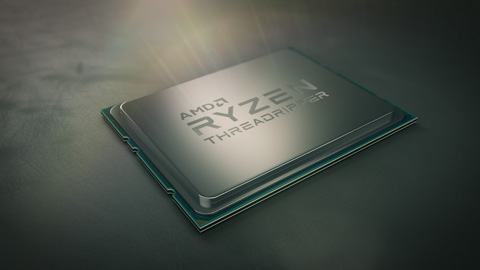
AMD has launched Ryzen Threadripper, a new family of high-end desktop CPUs which feature up to 16 cores and cost under $1,000.
This is massive news for users of rendering software, such as Chaos Group V-Ray, Luxion KeyShot or any of the CAD-based CPU renderers – all of which can take advantage of multiple CPU cores to cut render times.
Previously, in order to get hold of a desktop CPU with such a high core count, users have had to invest in one or two Intel Xeon E5 Series CPUs, which are significantly more expensive.
Ryzen Threadripper currently comes in two different models: the Threadripper 1950X (16-Core, 32-Thread, 3.4/4.0 GHz, $999) and the Threadripper 1920X (12-Core, 24-Thread, 3.5/4.0 GHz, $799). Both models feature ‘unlocked performance’, meaning they can be overclocked. However, even at the standard clock speeds, the performance should be good for GHz-hungry CAD/BIM applications.
A third variant, the 8-core 16-thread Ryzen Threadripper 1900X, will have a base clock speed of 3.8 GHz and precision boost of 4.0 GHz, and will be available on August 31 for $549.
The Ryzen Threadripper platform features the X399 chipset, supports quad channel DDR4 memory, and features 64 lanes of PCI Express. In theory, 64 lanes of PCI Express means Threadripper workstations could support up to four high-end GPUs, which will be of particular interest to users of GPU renderers such as V-Ray RT, Nvidia Iray, and AMD Radeon ProRender. Equivalent Intel CPUs can only support two or, at a stretch, three.
AMD has released Cinebench benchmark figures which compares the AMD Ryzen Threadripper 1950X to the recently announced Intel Core i9-7900X (10-Core, 20-Thread, 3.3/4.5 GHz, $999).
While the 16-Core Ryzen Threadripper 1950X is shown to be 15% slower than the 10-Core Intel Core i9-7900X in the single threaded test, it is a whopping 38% faster in the multithreaded test. Both CPUs cost $999.
AMD also claims the 12-Core Threadripper 1920X delivers up to 11% more performance than the Core i9-7900X, but costs $200 less.
Intel is fighting back, however, and recently announced new 14, 16 and 18 core additions to its Intel Core X-series processor family, which will be available on September 25.
All of this is fantastic news for users of rendering software. Previously, Intel owned the market, so the cost of a CPU with lots of cores was very high. Now, with AMD giving Intel some serious competition, we have already seen prices drop.
Of course, for Threadripper to thrive in the professional rendering market it will need to find its way into workstations. In the UK, a number of specialist manufacturers, including Armari, Scan and Workstation Specialists, are already selling / developing Threadripper machines. It will be interesting to see if the Tier One manufacturers – Dell, Fujitsu, HP and Lenovo – follow suit.








